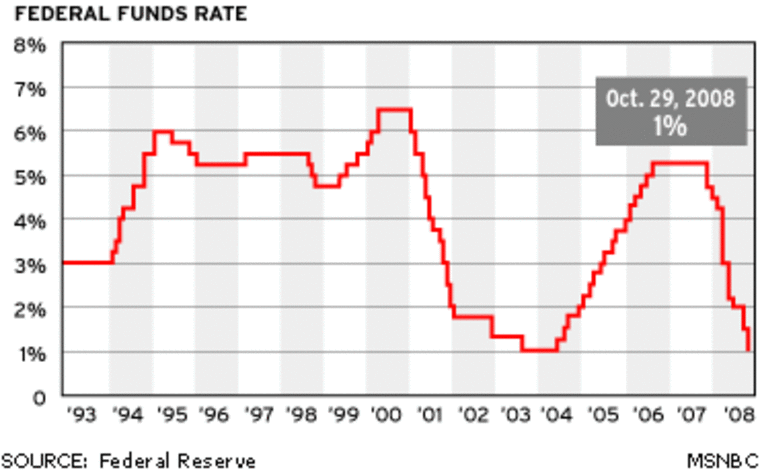Ben Bernanke is getting a gift for his first-year anniversary as Federal Reserve chief: healthy economic growth that seems to be generating less inflation.
Bernanke, who took the helm last February from longtime chairman Alan Greenspan, has had to face his share of threats. For example, ailing housing and automotive sectors risked undermining growth while energy prices stoked worries about an inflation flare-up.
Now, there is encouraging news on inflation and the economy is revving up. So Bernanke and his central bank colleagues on Wednesday held a key interest rate steady at 5.25 percent and extended a half-year breather for U.S. borrowers.
Wall Street surged in response. The Dow Jones industrials gained 98.38 points to close at 12,621.69.
Experts say Bernanke, who spent most of his professional life in academia, has navigated well.
“I think he has made the right call so far in terms of interest rates. I think he has done a pretty good job. He had pretty big shoes to fill taking over from Alan Greenspan and having to deal with very uncertain economic times,” said Victor Li, associate professor of economics at Villanova School of Business.
Commercial banks’ prime interest rate — for certain credit cards, home equity lines of credit and other loans — will stay at 8.25 percent as a result of the Fed’s action. It was one more break for borrowers who, until last summer, had endured the pain of two-plus years of rate increases.
Fed policymakers delivered a more positive assessment of the economy than they did in December. They recognized improvements in economic growth, inflation and even the troubled housing sector.
“Overall, the economy seems likely to expand at a moderate pace over coming quarters,” they said.
The Fed said core inflation, which excludes energy and food prices, has “improved modestly in recent months.” That was an upgrade from December when policymakers fretted about “elevated” readings on underlying inflation.
They noted anew that inflation risks remain and kept open the possibility of a rate increase. Still, with the Fed’s fairly upbeat assessment, many economists believe rates probably will remain where they are for much of this year.
The Fed’s announcement came hours after the government reported the economy had snapped out of a sluggish spell and grown at a 3.5 percent pace from October through December as consumer spending surged.
The report also showed that underlying inflation ebbed during that period.
The latest snapshot of business activity, released by the Commerce Department, showed the economy’s resilience. The economy has managed to keep moving despite the effects of the residential real-estate bust and an ailing automotive sector.
President Bush pointed to the economic figures as evidence that his policies are working. In a speech in New York, Bush also sought to calm fears about an economy that is constantly changing.
“By and large, our dynamic and innovative economy has helped Americans live better and more comfortable lives,” Bush said. “Yet the same dynamism that is driving economic growth ... also can be unsettling for people. For many Americans, change means having to find a new job or to deal with a new boss after a merger or to go back to school to learn new skills for a new career.”
An AP-Ipsos poll in early January found that 55 percent of people disapproved of the president’s handling of the economy, while 43 percent approved.
Democrats, in control of Congress for the first time in a dozen years, say the White House has not paid attention to widening economic inequality that they contend is making it harder for the middle class to succeed.
“Middle-class families are not struggling to get by, but they are struggling to get ahead,” said Sen. Charles Schumer, D-N.Y.
The economy opened 2006 on a strong note, growing at a 5.6 percent pace, the fastest spurt in 2½ years. But it lost steam during the spring and late summer. It grew at a 2.6 percent pace in the second quarter and then 2 percent in the third quarter. The fourth quarter’s rebound ended the year on a positive note.
“The economy has clearly caught its second wind,” said Bernard Baumohl, managing director of the Economic Outlook Group.
For all of 2006, the economy increased by 3.4 percent. That was an improvement from a 3.2 percent showing in 2005.
That is even more impressive considering the economy was hit by the housing slump. Investment in home building for all of last year was slashed by 4.2 percent, the most in 15 years.
An inflation gauge tied to the report showed that core prices — excluding food and energy — rose at a rate of 2.1 percent in the final quarter of last year, down from 2.2 percent in the third quarter.
To fend off inflation, the Fed had steadily boosted interest rates for two years, the longest stretch in its history.
But since last summer, it has left rates alone. Economists believe the Fed is on course to achieve its goal of slowing the economy sufficiently to thwart inflation but not so much as seriously hurt economic activity.
“The Fed almost seemed to be on the verge of declaring victory,” said Joel Naroff, president of Naroff Economic Advisors.
